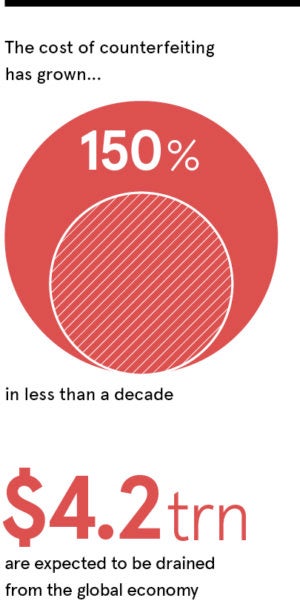It’s nearly 50 years since the first adidas FIFA World Cup match ball, the Telstar, was unveiled at the 1970 tournament in Mexico.
For last year’s World Cup, the iconic ball was transformed using technology that is changing the face of retail across the globe. Embedded in the Telstar 18 was a near-field communication (NFC) tag through which consumers with a smartphone could gain access to a whole range of exclusive content.
It’s an example of how product digitisation is transforming retail. Technology’s benefits are no longer confined to the back office, though improving inventory management and operational efficiency are still important.
But nowadays, product digitisation can be used to change customer experience to build a much closer relationship and broader understanding of the consumer. It’s time for brand owners and retailers to dive deeper, enhancing customer engagement.
It’s time for brand owners and retailers to dive deeper, enhancing customer engagement
The key is creating a secure, unique ID for each piece of merchandise, using radio-frequency identification (RFID) technology to embed digital tags that can benefit retailer and consumer alike. Brands such as adidas, Mammut and many others are using NFC tags already to interact with customers; one tap with a smartphone can open up a world of added value for the consumer.
Embedding NFC tags in products enables the retailer to continue a relationship that otherwise can be broken once the consumer walks out of a store. One tap can provide access to inspirational videos, for example, or can allow the purchaser to authenticate a product or trigger a warranty.
It can unlock exclusive and dynamic content such as snow reports or connect the buyer to cool games and challenges. It can also provide information about manufacturing processes or materials, enabling consumers to see the quality of the goods being purchased. Embedded tags offer the consumer so much more than just the physical item purchased.
 For high-value luxury brands, NFC tags can authenticate a product for both manufacturer and consumer. The tags cannot be cloned or removed, helping to protect a brand owner from counterfeits, grey and diversion markets or reassure the customer that they are purchasing the real deal. Given that the global impacts of counterfeiting and piracy are expected to reach $4.2 trillion by 2022, that’s a significant value.
For high-value luxury brands, NFC tags can authenticate a product for both manufacturer and consumer. The tags cannot be cloned or removed, helping to protect a brand owner from counterfeits, grey and diversion markets or reassure the customer that they are purchasing the real deal. Given that the global impacts of counterfeiting and piracy are expected to reach $4.2 trillion by 2022, that’s a significant value.
But the process works both ways as NFC tags offer the retailer an unprecedented level of customer engagement on a large scale. Behind the scenes in the office, the factory and the shop floor, product digitisation using RFID technology brings further margin-boosting benefits.
Inventory can be accurate to 98 per cent, with a 50 per cent reduction in out-of-stocks. Sales can be boosted by up to 20 per cent, as products are directed to exactly the right place at the right time. Online purchases can be fulfilled with confidence, supply chain errors are reduced and merchandise made available across a network of stores. Shop assistants have quick and easy access to product information, providing more time to help customers with purchases. Tags can also guard against losses from theft and speed up checkout procedures.
It’s an impressive list of benefits. Product digitisation turns offline products into online platforms, enabling retailers to deepen a relationship with existing customers, reducing the need to spend time and money chasing new buyers. It’s the future of retail.
For more information please visit www.smartrac-group.com

